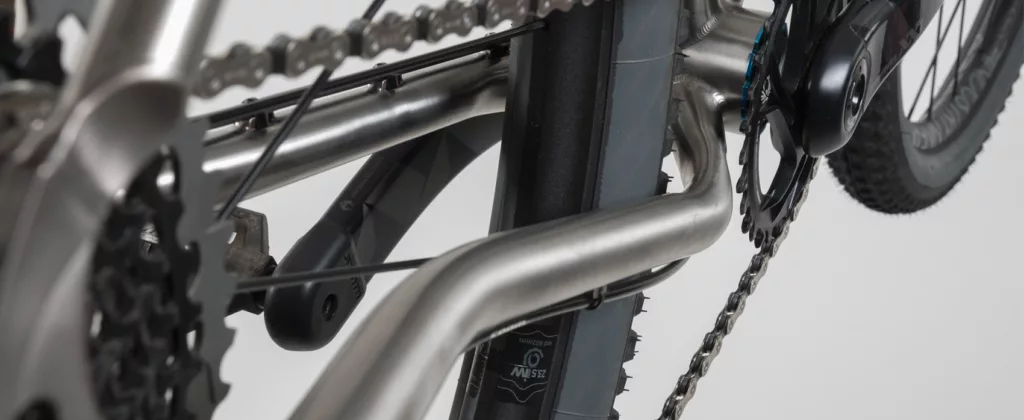For many, the world of cycling may seem filled with complex jargon and unfamiliar terminology. Amidst all the talk of derailleurs, cassettes, and groupsets, it’s easy for certain bicycle components to be overlooked. One such under-appreciated part of the bicycle anatomy is the humble chainstay. This article will delve into the world of chainstays, exploring their purpose, and tracing the key developments they have undergone over the course of bicycle history.
Table of Contents
ToggleWhat are Chainstays?
The chainstays are integral parts of a bicycle’s frame. They’re the pair of tubes that run from the bottom bracket (where the crankset and pedals are mounted) to the rear dropouts (where the rear wheel’s axle is attached). The chainstays, along with the seat stays, form the rear triangle of the bicycle frame, and their length is measured from the middle of the bottom bracket to the centre of the rear wheel axle.
The Purpose of Chainstays
Chainstays play a critical role in the overall performance and handling characteristics of a bicycle. They primarily serve two main functions:
- Support and Stability: The chainstays provide structural support to the bicycle, holding the rear wheel in place and maintaining the appropriate distance from the bottom bracket.
- Influence on Handling and Performance: The length of the chainstays affects the bicycle’s handling characteristics. Longer chainstays tend to offer more stability and are commonly seen on touring and gravel bikes, where comfort and stability over long distances are crucial. On the other hand, shorter chainstays contribute to a more agile and responsive ride, favoured in disciplines like mountain biking and road racing, where quick manoeuvrability is beneficial.

The Evolution of Chainstays
Chainstays, like most components of the bicycle, have seen significant evolution over the years. Here are a few notable developments:
- Material Advancements: The earliest bicycles featured chainstays made of steel, prized for its strength and durability. As technology evolved, aluminium became popular due to its lighter weight. Nowadays, high-end bicycles often feature carbon fibre chainstays for their unbeatable strength-to-weight ratio.
- Design Innovations: To cater to the growing popularity of wider tyres, particularly in gravel and mountain biking, manufacturers have innovated chainstay design to accommodate this trend. This has resulted in creative solutions like dropped or elevated chainstays, which provide the necessary clearance for wider tyres without lengthening the chainstays.
- Adjustable Chainstays: Some modern bicycles feature adjustable chainstays, allowing the rider to modify the bike’s handling characteristics according to their preference or specific riding conditions. This offers unprecedented versatility, as a bike can be tuned for maximum stability for a long tour or tweaked for snappier handling for a mountain bike trail.
Chainstays: The Silent Contributors to Cycling Performance
Chainstays might not be the most glamorous component of a bicycle, but their importance in influencing a bike’s handling and performance cannot be overstated. They’ve come a long way from their early days, with ongoing innovations designed to meet the evolving demands of cycling disciplines. Next time you hop on your bike, spare a thought for the humble chainstays – those silent contributors to your cycling experience.






